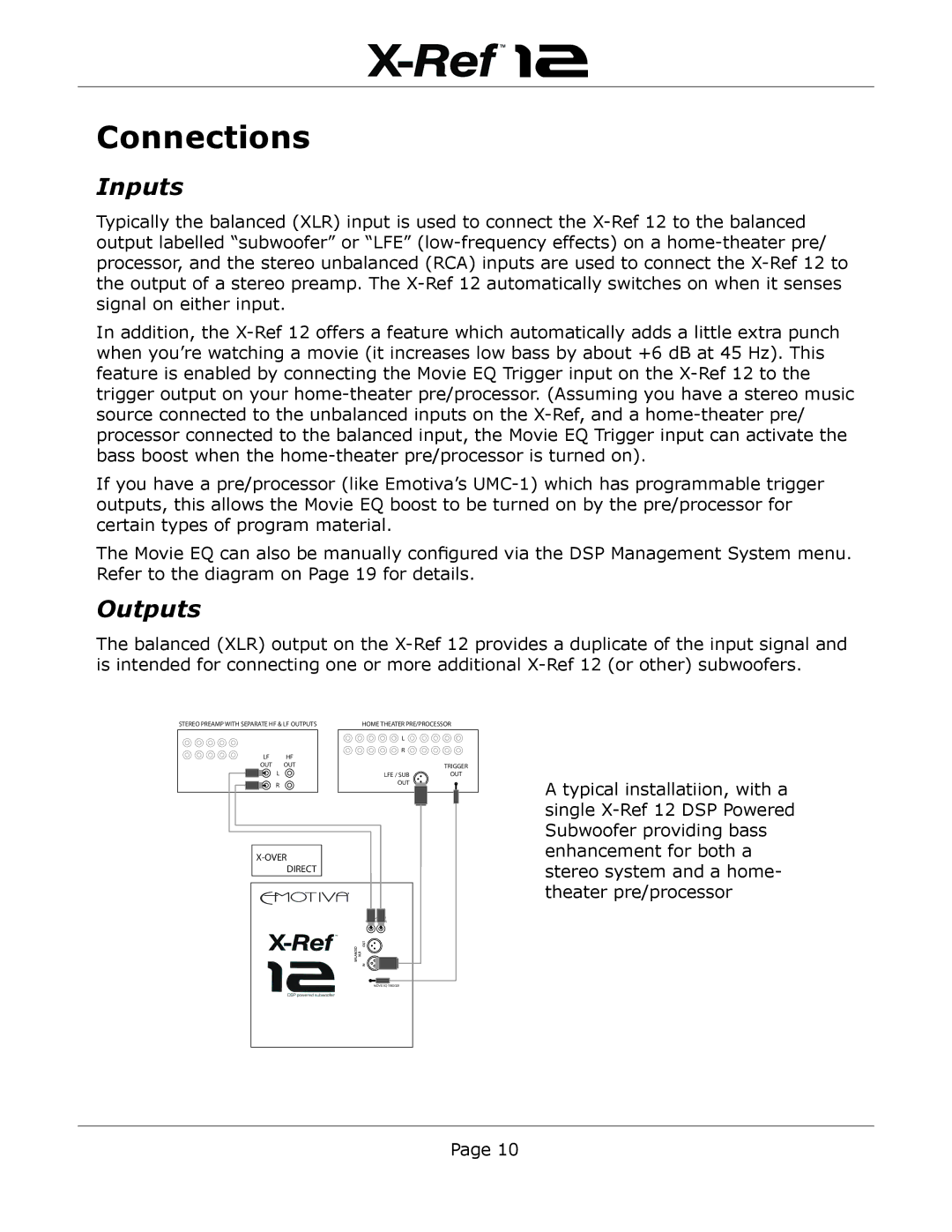X-Ref 12 specifications
The Emotiva X-Ref 12 is a powerful and high-performance subwoofer designed for audiophiles and home theater enthusiasts seeking deep, impactful bass. With its sleek design and advanced technology, the X-Ref 12 enhances any audio-visual experience, making it an essential addition to your audio setup.One of the standout features of the X-Ref 12 is its impressive 12-inch high-excursion driver. This driver is engineered to deliver deep, low-frequency extension and precise control, ensuring that every bass note is rendered with clarity and power. The robust construction of the driver minimizes distortion, allowing for an immersive listening experience that captures the full range of frequencies without compromise.
The subwoofer is equipped with a class D amplifier that delivers a powerful output of up to 300 watts RMS, enabling it to produce deep, impactful bass that can fill even the largest rooms. The amplifier is highly efficient, providing optimal performance without generating excessive heat, ensuring longevity and reliability.
One of the highlights of the X-Ref 12 is its advanced DSP (Digital Signal Processing) technology. This technology allows for precise tuning and adjustment of the subwoofer’s output to match the acoustics of your specific listening environment. Users can easily customize settings such as phase, crossover frequency, and equalization, making it possible to fine-tune the performance for an ideal sonic experience.
The design of the X-Ref 12 is both functional and aesthetically pleasing. It features a rugged MDF cabinet that minimizes resonance and vibration, providing a stable platform for the driver. The modern, stylish finish makes the subwoofer an elegant addition to any room, seamlessly blending with different home décor styles.
Versatility is another key aspect of the Emotiva X-Ref 12. It includes multiple input options, including both line-level and LFE, ensuring compatibility with various audio systems. This adaptability makes it suitable for use in both stereo and surround sound setups, allowing users to enjoy the full potential of their audio systems.
In summary, the Emotiva X-Ref 12 subwoofer stands out with its impressive driver, powerful class D amplifier, advanced DSP technology, and versatile connectivity options. Whether you're watching movies, playing video games, or listening to music, the X-Ref 12 delivers an unparalleled bass experience that brings your audio content to life.

